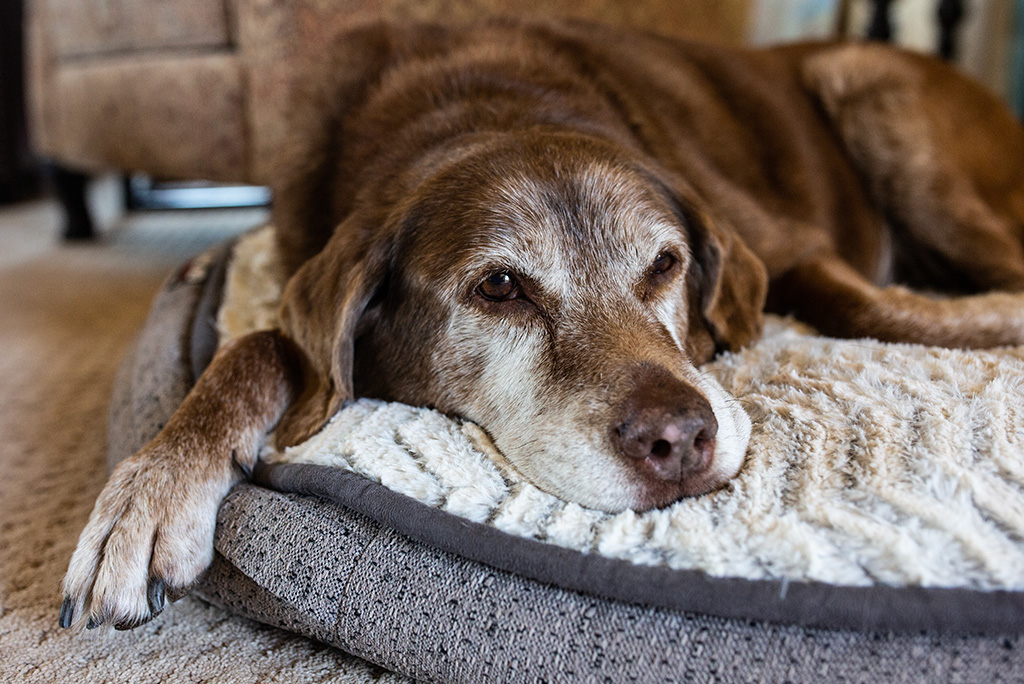Our pets age a lot faster than we humans do. According to the American Veterinary Medical Association (AVMA), the first year of a medium-sized dog’s life is the equivalent of 15 human years. The second year is about 9 human years; the third is roughly 5 human years. That means the average medium-sized dog ages almost 30 years in 3 human years!
1 human year in a pet’s life is a long time, and a pet’s health can change drastically over the course of a year. In honor of National Senior Pet Health month, here are some key considerations when managing your pet’s health as it grows older.

The age definition for a senior pet is probably younger than you’d expect.
In general, 8 years old is considered senior for most cats and dogs. However, there are some differences depending on breed and size. Giant breed dogs, like Great Danes and Bernese Mountain Dogs, are considered seniors at age 6. Smaller dog breeds can live much longer, with Jack Russell Terriers and smaller poodles living until they are 15 or 16 years old.
It’s critical to proactively manage your pet’s health before the golden years.
Pet’s need routine, proactive health care in the years leading up to senior age. Dogs who don’t get the dental work they so desperately need at age 8 will only worsen over time. Procedures that can be done on a healthy 8-year-old pet can be much riskier on a 14-year-old pet with a heart murmur. The side effects associated with anesthesia only grow as pets age. Address issues when your pet is otherwise healthy.
Annual screening will help point to underlying conditions that aren’t visible to pet owners.

And you might be thinking, wouldn’t I see changes in my pet if it was sick? While you could be quite watchful, a dog’s limp might develop so slowly that you don’t see it – especially if it is a bilateral problem, which is common with hip arthritis. And your cat may be ill and losing body weight, but by the time you notice the problem, your pet is much sicker than you realize. It will take much more in the way of diagnostics and therapy to return to health. That’s why regular screening is so important.
Continue to watch for changes in your senior pet’s behavior.
Pet owners should always be watchful of their pet – even though some changes are invisible to the naked eye. A lack of appetite can signal many things, from tick-borne diseases to liver and kidney problems. An increase in thirst is a common sign of diabetes. And limping, having trouble getting up stairs or on furniture, or even having trouble standing up in the morning can all be indicators of arthritis or other musculoskeletal issues.
Follow your veterinarian’s recommendations.
Your veterinarian has your pet’s best interests at heart. The lab tests and screening do incur costs for pet owners, and they provide a huge benefit: an “under the hood” view of your pet’s health. Your vet can use test results to see how organs are functioning in a way that the naked eye can’t see. Combined with physical and dental exams, bloodwork and urinalysis give your veterinarian the tools he or she needs to make informed recommendations. Together, you can do your best to ensure a long, healthy life for your pet.
Any questions? Get in touch with your veterinarian.
 by a veterinarian
by a veterinarian


